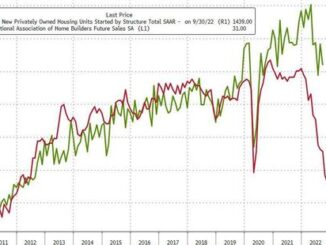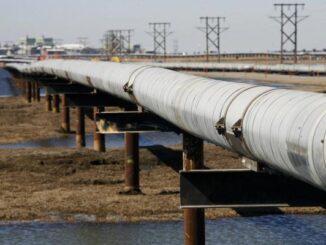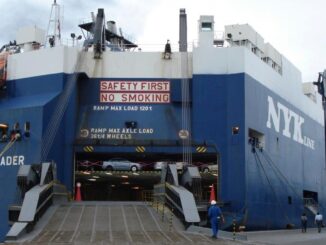
- America’s shale industry is looking to ramp up production, but it is facing two major hurdles that could curb its trajectory.
- Supply chain issues, runaway inflation and a growing labor shortage have hindered the industry’s ability to increase output.
- “Even if the president wants us to grow, I just don’t think the industry can grow anyway,” said Pioneer CEO Scott Sheffield.
U.S. shale production is back in growth mode, but inflation and supply chain bottlenecks could hobble the growth trajectory this year despite the tempting economics of $100 oil.
The United States is set to post an annual record of 12.6 million barrels per day (bpd) of crude oil production in 2023, while this year’s average is forecast at 12 million bpd, up by 760,000 bpd from last year, according to EIA’s latest estimates.
Yet, cost inflation, labor and equipment shortages, and continued restraint in spending and drilling from the biggest public independents could slow output growth. The U.S. shale patch is set to play a more minor role in potentially bringing down international crude oil prices and American gasoline prices than it did in the previous upcycles when annual growth topped 1.2 million bpd in 2019 and 1.6 million bpd in 2018.
‘Headwinds To Growth’
“We think the U.S. is definitely going to face some headwinds in growth on this year,” Ezra Yacob, chief executive of shale giant EOG Resources, said on the earnings call last week.
“When we think about the growth forecasts that are out there and have been publicly discussed, we’re probably a bit more on the lower end in general on the crude and condensate side. And the reason for that is I think you’re seeing commitment from the North American E&P space to remain disciplined and then you couple that with some of the inflationary and supply chain pressures,” Yacob added.
EOG Resources president and chief operating officer Billy Helms noted that there are a lot of headwinds for the U.S. shale patch to ramp up activity and grow production this year.
Related: Oil Prices Retreat As Biden Leaves Energy Out Of Sanctions Package
Equipment and labor constraints are some of those headwinds, Helms said on the call, giving as examples challenges in attracting workers for the drilling and frac stages and the fact that “most of the good equipment is already under employment today.”
“And hopefully, the industry can strengthen and get better on a go-forward basis. But this year is going to be a challenging year from that side,” said Helms.
Over the past weeks, other shale producers and oilfield services providers have flagged headwinds to this year’s growth. For example, frac sand in the biggest shale play, the Permian, is in short supply, threatening to slow drilling programs at some producers and sending sand prices skyrocketing. This adds further cost pressure to American oil producers, who are already grappling with cost inflation in equipment and labor shortages.
$100 oil could unleash a lot more U.S. oil production, in theory, but supply chain constraints and record-high sand prices are likely to temper growth, analysts say.
“There is no doubt, the much-anticipated multiyear upcycle is now underway,” Jeff Miller, CEO at the biggest fracking services provider, Halliburton, said on the Q4 earnings call in January. But he also noted that “As activity accelerates, the market is seeing tightness related to trucking, labor, sand, and other inputs.”
Biggest Independents Rein In Production Growth
Supply chain and cost inflation aside, the largest public independents in the U.S. shale patch are not racing to pump too much crude, even at $100 oil.
EOG Resources, for example, guides for crude and condensate production in the range of 455,000 to 467,000 bopd for 2022, compared to 443,000 bopd for 2021, suggesting that one of the biggest listed independents follows the other public shale firms in pledging to cap growth and return more cash to shareholders.
Pioneer Natural Resources, the biggest oil producer in the Permian, will not open the taps and will stick to discipline even at $200 oil, says chief executive Scott Sheffield.
“Whether it’s $150 oil, $200 oil, or $100 oil, we’re not going to change our growth plans,” Sheffield told Bloomberg Television in an interview last month.
The capital discipline from the public independents in the U.S. shale patch doesn’t bode well for U.S. gasoline prices and for President Biden’s approval ratings. Yet, companies like Pioneer Natural Resources, Continental Resources, and Devon Energy are keeping discipline and plan to grow production by no more than 5 percent annually. Diamondback Energy is also part of that crowd.
“Diamondback’s team and board believe that we have no reason to put growth before returns. Our shareholders, the owners of our company, agreed. And as a result, we will continue to be disciplined, keeping our oil production flat this year,” chairman and CEO Travis Stice said on the earnings call last week.
Capex discipline from the largest shale firms and the supply chain bottlenecks for many producers will cap U.S. oil production growth, according to Pioneer’s Sheffield.
“Several other producers are having trouble getting frack crews, they’re having trouble getting labor and they’re having trouble getting sand; that’s going to keep anybody from growing,” he told Bloomberg in February.
“Even if the president wants us to grow, I just don’t think the industry can grow anyway,” said Sheffield.



